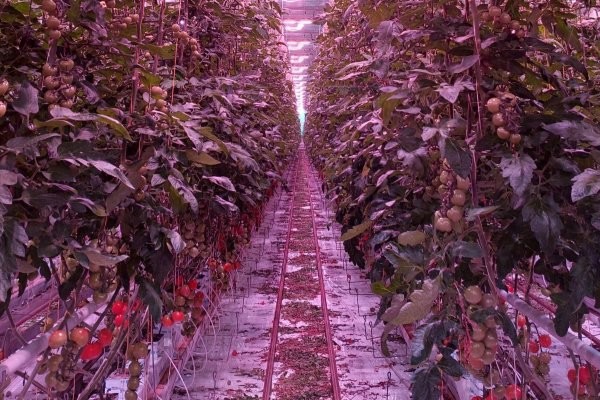In recent years, many growers have switched from SON-T lighting to LED lighting. These lamps are more energy efficient. But they also have a major effect on the greenhouse climate, due to a different color spectrum and much less radiant heat. This often leads to cultivation problems. The Greenhouse Horticulture and Flower Bulbs Business Unit of Wageningen University & Research is investigating exactly what causes these problems in tomato cultivation and how they can be prevented.

LED lamps emit little radiant heat; they only provide convection heat (i.e., heat distribution through the air). Moreover, the installed power often remains the same, causing the light intensity under the LED lamps to increase from 180 µmol to 280 µmol. The total heat input remains the same, but less heat is supplied per µmol of exposure. At the crop level, this leads to less evaporation: the driving force for evaporation decreases. At the greenhouse level, there is a lower energy input per mole of PAR lighting.
This lower evaporation means that less water is transported in the crop. As a result, some nutrients (including calcium) find their way less well to the head of the crop. This leads to various cultivation problems in many crops. In tomatoes, this concerns discoloration (when the fruit ripens, the fruit does not turn evenly red but retains green spots) and leaf edges. Because there was an excess of heat that had to be removed with SON-T lighting, there was no moisture problem. Now that's different. The windows often remain closed and an energy screen has been installed to keep the heat in the greenhouse as much as possible. This causes the humidity to rise considerably, resulting in mold formation.
The challenge now is to add such an amount of heat that there is sufficient evaporation, moisture control in the greenhouse is in order and to keep the plant in balance (vegetative vs generative). WUR is therefore investigating five renowned tomato growers to find out exactly what causes the cultivation problems and what possible solutions are. Examples of possible solutions are: fans to distribute the heat, targeted heating of certain places in the greenhouse, or hanging the heating pipes at a different height.
The research into Full-LED in tomato cultivation is funded by the Kas als Energiebron program.
Source: wur.nl
